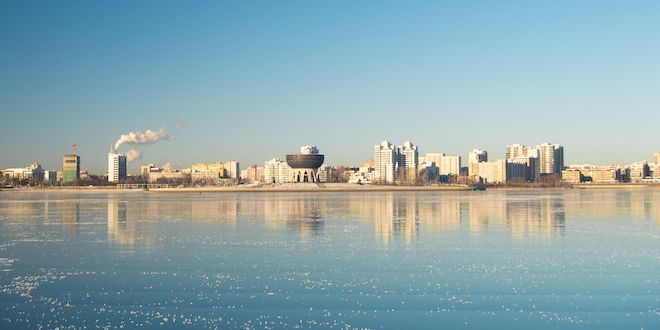Last Updated on January 3, 2022
Taking only about five days, the Moscow Ulaanbaatar train carries travelers through a near-total change of culture, history, and natural beauty. From European forest to Mongolian steppe, from onion-domed church to Buddhist temple, this trip captures two worlds in one journey. But aside from the drastic differences of the end points, this route offers a number of intriguing and unique sights along the way as well.
European Russia
Nizhny Novgorod: This 13th Century Slav’ city boasts a number of historical and cultural sites (many of which date from the city’s earliest days), from the cobblestone streets to the city’s Grand Kremlin overlooking the Volga River to the Museum House of Gorky. Visitors can stroll the famous Chkalov Staircase or take the cable-car over the river for a fantastic view of the city.
Yekaterinburg
View this post on Instagram
Founded as a gateway to the rich natural resources of Siberia, Yekaterinburg has always been a prosperous city with its own unique character separate from the Siberian wilderness it occupies. This unique city hosts monuments to both the QWERTY keyboard and the British rock group the Beatles. The last Tsar and his family were imprisoned and executed here after the Russian Revolution, and a number of historical sites let visitors retrace that tragic journey.
Siberia
Novosibirsk: Founded at the site of the Trans-Siberian Railway’s crossing over the Ob River, Novosibirsk was devastated by the Russian Civil War but sprang back during Stalin’s rule, becoming a major industrial center and one of the largest cities in Russia. The city hosts both one of the world’s largest opera houses and a major research and educational hub on the site of Akademgorodok, a secret research town from the Soviet era.
You may also enjoy: 10 Reasons to choose the high-speed Sapsan over a Russian Plane
Irkutsk
View this post on Instagram
While it might be tempting to bypass the city itself in favor of the natural wonder of Lake Baikal nearby, Irkutsk has its own appeal for travelers. The intricate 19th Century wooden homes of the Decembrists, who were exiled to Irkutsk after their failed attempt to overthrow the Tsar, still stand in the historic city center. And the impact of those Decembrists is still reflected in the city’s thriving cultural and educational life.
Ulan-Ude
The capital of Russia’s autonomous Buryat Republic, Ulan-Ude is Russia’s gateway to Mongolia, and in many ways seems more aligned with Ulaanbaatar than with Moscow. The city boasts a Buddhist temple, the Ivolginsky Datsan, that is the capital of the religion in Russia. Visitors to the city can explore the one of the largest open-air museums in Russia – the Ethnographic Museum – which hosts artifacts from the region going back some 3000 years. The mix of East and West in the city’s culture makes it a popular stop.
You may also enjoy: St. Petersburg to Moscow Night Train Options
Mongolia
View this post on Instagram
After Ulan-Ude, the Trans-Mongolian railway breaks off from the main route of the Trans-Siberian, crossing into Mongolia. The birch trees of Siberia rapidly give way to open plains and hilly grasslands. People can be few and far between, often with only a single yurt or livestock herd giving sign of any human population at all. Even more rare are any sort of motorized vehicles – a true luxury in Mongolia – but horses are plentiful and an intrinsic part of Mongolian culture. Visitors should take the chance to join locals on a horse-trek as they make their way through the country. Also, bear in mind that, once in Mongolia, only Mongolian currency will be accepted on the train.
Ulaanbaatar
The only truly large city in Mongolia, Ulaanbaatar hosts half of the country’s population and contributes two-thirds of its GDP. Though despite its industry, the city still retains a timeless feel detached from the modern world. Street vendors still offer fermented horse milk tea and meat dumplings. The gongs and chants from the Buddhist monastery of Gandantegchinlen still ring through the city. And in winter, coalsmoke chokes the air as residents try to stave off the cold (Ulaanbaatar is notable as the coldest national capital in the world). And just a short distance from the city, visitors can enjoy sights like the Manzushir monastery and Gorkhi-Terelj National Park.
And those traveling through Ulaanbaatar on the Moscow Beijing train can enjoy views of the Gobi Desert just a few hours south of the city and then end the full run of the Trans-Mongolian in China’s capital just a day later. Trains run weekly on the Trans-Mongolian route, though a Moscow to Beijing train also runs on the Trans-Manchurian railroad route through Harbin.
You may also enjoy: 7 Russian Eats For a Traveler On-The-Go
 Travel for Food Hub The Food Blog for Travel Lovers
Travel for Food Hub The Food Blog for Travel Lovers









